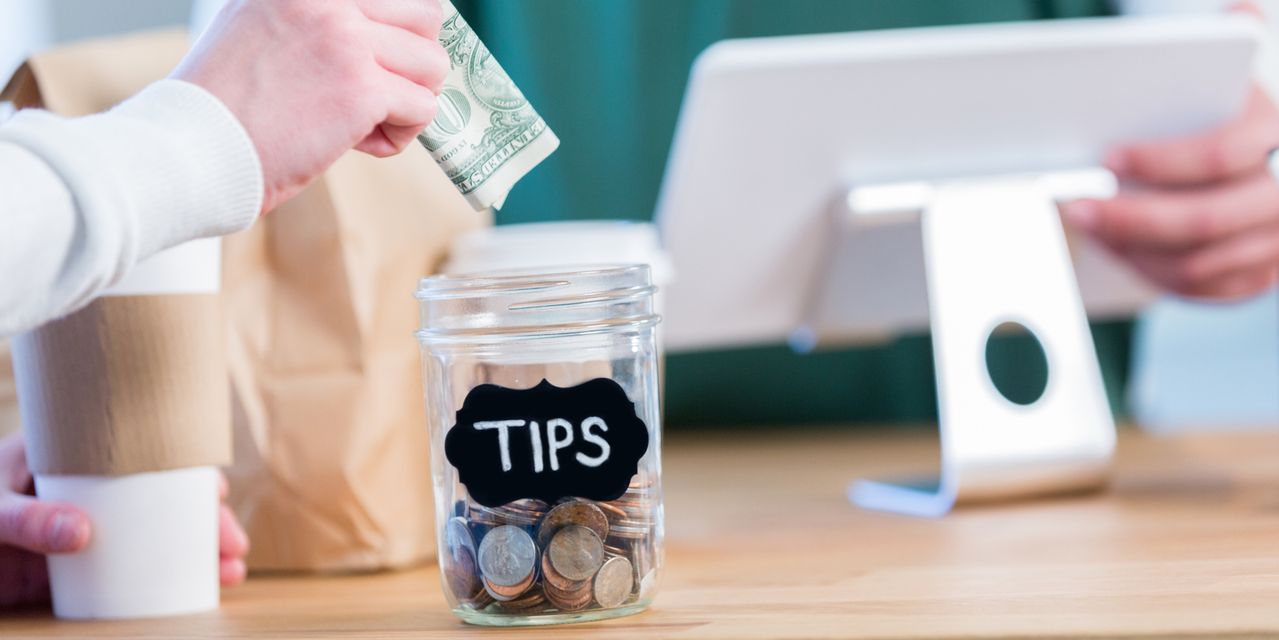I learned everything I needed to know about the current state of tipping when I joined some pals to play pinball at a New York bar the other night.
We were in the midst of a friendly competition when a machine kept breaking down. We called over a very busy employee who’s responsible for helping keep the place running, including picking up all those errant bar glasses and plates of half-eaten food. He put everything aside to fix our problematic pinball machine twice.
I suggested to everyone that we give him $10 for his time and effort, splitting the tip amongst all of us. A couple of the guys immediately balked, insisting the employee was just doing the job he was paid to do. I pushed back and got the group to agree to the plan, albeit somewhat grudgingly.
That employee was not much different, one could argue, from almost any service worker in any job, from the barista who prepares your morning coffee to the garage attendant who valets your car. There are countless people we can tip on any given day and we are increasingly being prompted to reward them. Admittedly, my pinball wizard didn’t have his hand out, but how many of us have run across those payment screens that suggest a 20% tip for being handed a sandwich we ordered?
It’s led to what’s been dubbed “tipping fatigue” — and there’s data to back up the trend: 66% of American adults have a negative view of tipping, according to a recent Bankrate survey, and 32% say they’re sick of those payment-screen prompts. The end result is that we are tipping less often: In 2019, 77% of American adults said they always tipped their server at sit-down restaurants, but that figure dropped to 65% this year, according to Bankrate.
So, does that sandwich handler really deserve your dollar? Here’s where I’m willing to play contrarian and say, “Yes!”
We live in an era when things keep costing more and more: Inflation may be off its recent peak of above 6%, but it’s still at 3.7%. Meanwhile, wages have not necessarily kept pace: Personal income actually went down by nearly 4% in 2022 when adjusted for inflation, according to one analysis.
“What does the average waiter earn in New York? A measly $25,102.”
When it comes to high-cost cities, the situation is clearly grimmer, something I know first-hand from living in New York. Consider that the average Manhattan rent just surpassed $5,000 for the first time in history. Meanwhile, what does the average waiter earn in New York? A measly $25,102 a year, according to Salary.com.
Of course, waiters may not live in the priciest Manhattan digs, but they still have to live in New York and it’s still a stretch for them — along with millions of others — to make ends meet. The same likely goes for waiters pretty much anywhere in the country. Or sandwich handlers. Or almost anyone in any service job.
A hotel housekeeper, for example, earns just $24,352 a year on average in the U.S., according to ZipRecruiter. And unlike waiters, who are still likely to get a tip of some kind, these workers are rarely recognized by customers. Just 23% of us tip the person who cleans our hotel room, according to a Bankrate survey; that percentage is down from 28% just two years ago — it seems we’re getting less generous over time.
Not that waiters have such a great deal, either: In most parts of the country, they are paid below minimum wage, with the idea that tips will get them to at least that mark, if not above it. (Should they fall below the minimum level, even with tips, employers must make up the difference.) It’s a system rife with problems and it has prompted calls to raise salaries to that minimum level, so any gratuities given can truly be, well, tips.
Brother, can you spare a dollar?
Either way, it’s fair to say service workers don’t make a whole lot of money. So, if you’re employed outside the service industry, that probably means the dollar that you are tipping someone means a lot more to them than to you.
Of course, there’s the argument that we should ban tipping altogether and have employers pay everyone a decent wage, even if that means businesses will be forced to pass on the costs to the consumer. But plenty of Americans oppose that idea, so much so that when Danny Meyer, the prominent New York-based restaurateur, instituted a no-tip policy at his establishments some years ago and instead raised servers’ wages by increasing menu prices, the plan backfired and was eventually abandoned.
Customers simply couldn’t get on board with the notion of shelling out more for their meals with the hospitality charges included, Meyer said. They preferred the age-old method of paying less upfront and then calculating a tip. “It’s a game. Been going on forever,” Meyer said in frustration when I interviewed him last year about the subject.
“In 2019, 77% of American adults said they always tipped their server at sit-down restaurants, but that figure dropped to 65% this year”
The problem now is that the game has seemingly broadened to include service workers we didn’t previously think of tipping. And that leaves us confused as to what to do: How much to tip the sandwich handler, if at all? Plenty of experts have their opinions — so much so that MarketWatch has put together a comprehensive guide offering advice.
Some of the tipping fault lines may be generational — that is, older people are less likely to tip in a variety of circumstances than younger folks. A recent survey by BentoBox, a restaurant marketing and commerce platform, found that 41% of baby boomers say they don’t tip for coffee ordered at a café, but only 18% of Generation Zers say they refuse to tip in the same situation.
I’m a late boomer myself and I admit there are times I suspect the tipping thing has gone too far — say, when I’m at a self-checkout line and there’s still a prompt to leave something extra. But I’m generally willing to err on the side of caution: If someone is looking for a tip, I’ll assume they have financial reasons to do so. Again, that dollar (or two) won’t make or break me, but enough of those dollars from enough customers might make that next rent payment easier for a service worker to bear.
Plus, tipping is “good karma,” says etiquette expert Jacqueline Whitmore. She says it’s always worth it to tip in unexpected situations — that is, ones that don’t necessarily involve a prompt on a payment screen. She recalls a recent instance when she gave $5 to a Home Depot
HD,
employee for going out of his way by helping her load an appliance in her car. “Why not tip him?” she says.
Why not, indeed. And speaking of karma, here’s what happened next with my pinball-machine fixer at the bar. He was extremely grateful for the $10 tip we gave him — so much so that later that night, he rewarded our group with well more than $10 in free tokens for future play.
Next time, there will be no arguments with my friends when it comes time to tip.
Read the full article here







